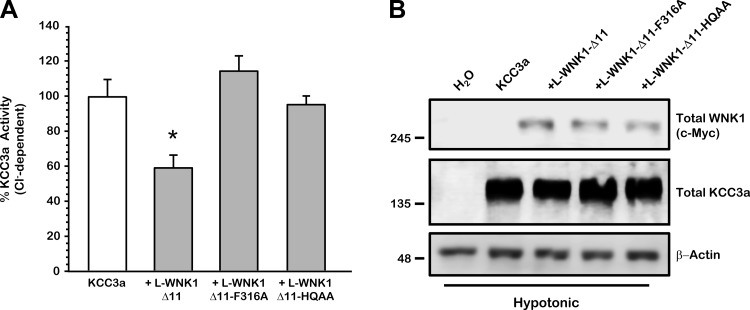Fig. 7.
L-WNK1-Δ11-F316A and L-WNK1-Δ11-HQAA lose the inhibitory effect on KCC3a under hypotonic conditions. Xenopus laevis oocytes were injected with 0.2 μg/μl of KCC3a cRNA alone or together with 0.1 μg/μl of L-WNK1-Δ11, L-WNK1-Δ11-F316A, or L-WNK1-Δ11-HQAA cRNA, as stated. A: 86Rb+ uptake was assessed 48 h later under hypotonic conditions (110 mosmol/kgH2O). The chloride-dependent Rb+ uptake observed in KCC3a control was taken as 100%, and the effect of the WT kinase and mutants was normalized accordingly. The pooled data from 4 different experiments are shown in percentage of KCC3a activity with means ± SE; n = 4 (10–15 oocytes per group, per experiment were tested). *Significantly different from the uptake observed in KCC3a alone (P < 0.001, by Student's t-test). B: representative Western blot assay of total protein extracted from oocytes injected with water or wild-type KCC3a alone or with L-WNK1-Δ11, L-WNK1-Δ11-F316A, or L-WNK1-Δ11-HQAA mutants cRNA under hypotonic conditions, as stated. Blots were performed using specific antibodies against c-Myc-WNK1, total KCC3a, and β-actin as loading control.

